Key takeaways:
- Impulse buying is often emotionally driven and can lead to buyer’s remorse, impacting financial goals and self-image.
- Using finance apps helps track expenses, set budgets, and provides real-time insights, reducing the likelihood of unplanned purchases.
- Key features of finance apps include goal-setting, customizable budgeting tools, and integration with bank accounts for better financial clarity.
- Regularly tracking spending and setting budget goals, such as the 50/30/20 rule, can create financial awareness and flexibility to adapt to changing circumstances.
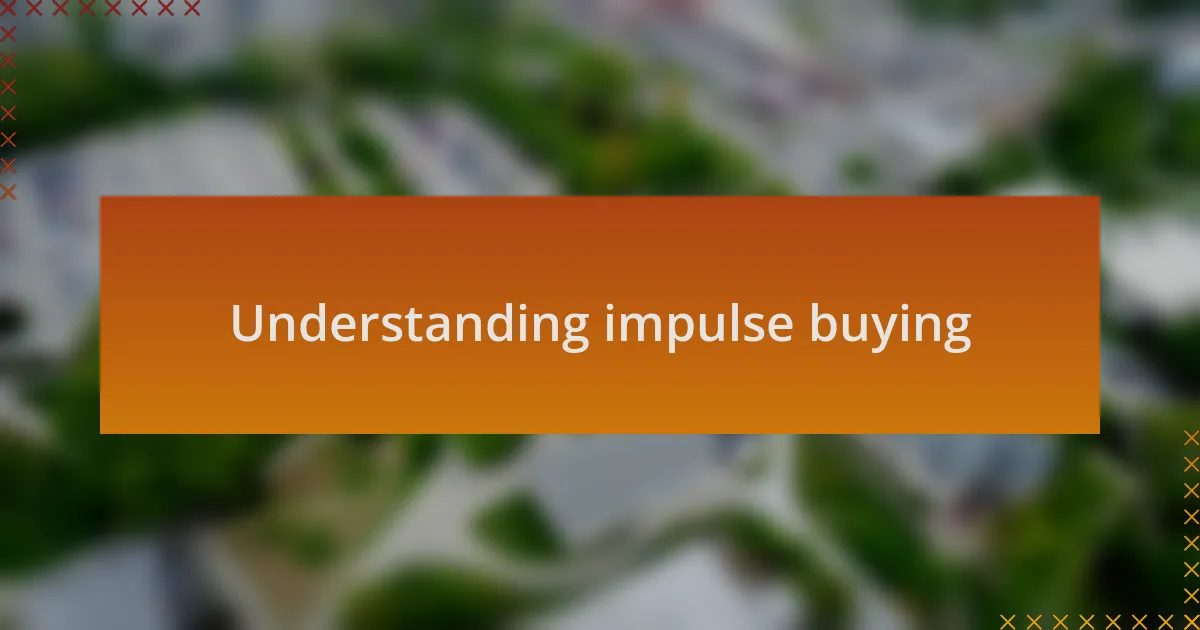
Understanding impulse buying
Impulse buying is often driven by emotions rather than logic. I remember a time when I walked into a store feeling a bit down and walked out with three items I didn’t plan on buying. Have you ever found yourself in a similar situation, where a fleeting feeling pushed you toward that shiny new gadget or trendy clothing item?
Understanding this behavior involves recognizing how effective marketing can trigger our desires. Retailers often create enticing environments designed to spark our emotions and spark those impulse purchases. It makes me wonder: how often do we buy something not because we need it, but simply because it feels good in the moment?
The thrill of getting something new can become addictive. I’ve noticed that every time I made an unplanned purchase, that initial excitement quickly faded, leaving me with buyer’s remorse instead. What if we took a pause to think about our actual needs before swiping our cards? It’s a simple but powerful way to push back against impulse buys and make more thoughtful choices.
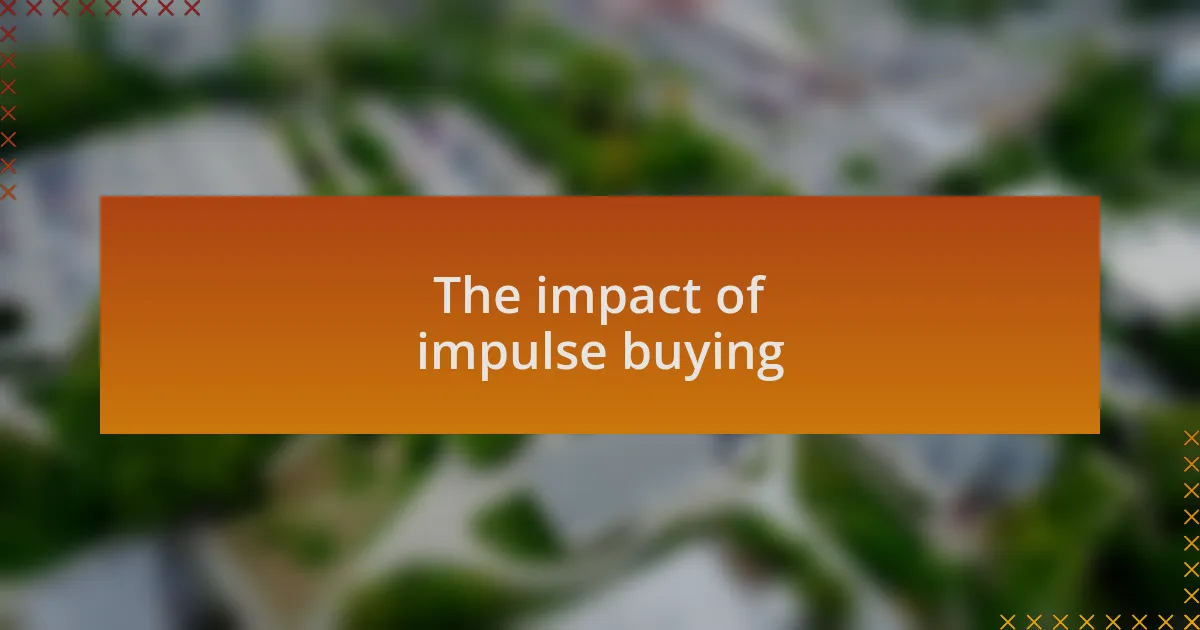
The impact of impulse buying
The impact of impulse buying can be significant, both financially and emotionally. I vividly recall a month when my spontaneous shopping led to a shocking credit card bill. It’s easy to get caught up in the moment, but that sudden urge can result in stress and regret once the excitement wears off.
On a larger scale, impulse buying often disrupts our financial goals. I’ve experienced firsthand how unplanned purchases can derail budgets I’ve meticulously created. When I find myself buying things on a whim, I realize that it not only impacts my wallet but also my ability to save for things that truly matter, like a vacation or a new car. Isn’t it interesting how one moment of weakness can ripple through our entire financial landscape?
Moreover, I believe impulse buying can shape our self-image. Each time I purchase something unnecessary, I grapple with the feeling of inadequacy—it’s almost as if I’m trying to fill a void. This realization makes me ponder: what if I redirected that energy toward activities that actually boost my self-esteem? By recognizing the emotional cost of impulse buying, we can take steps toward making more fulfilling and intentional choices.
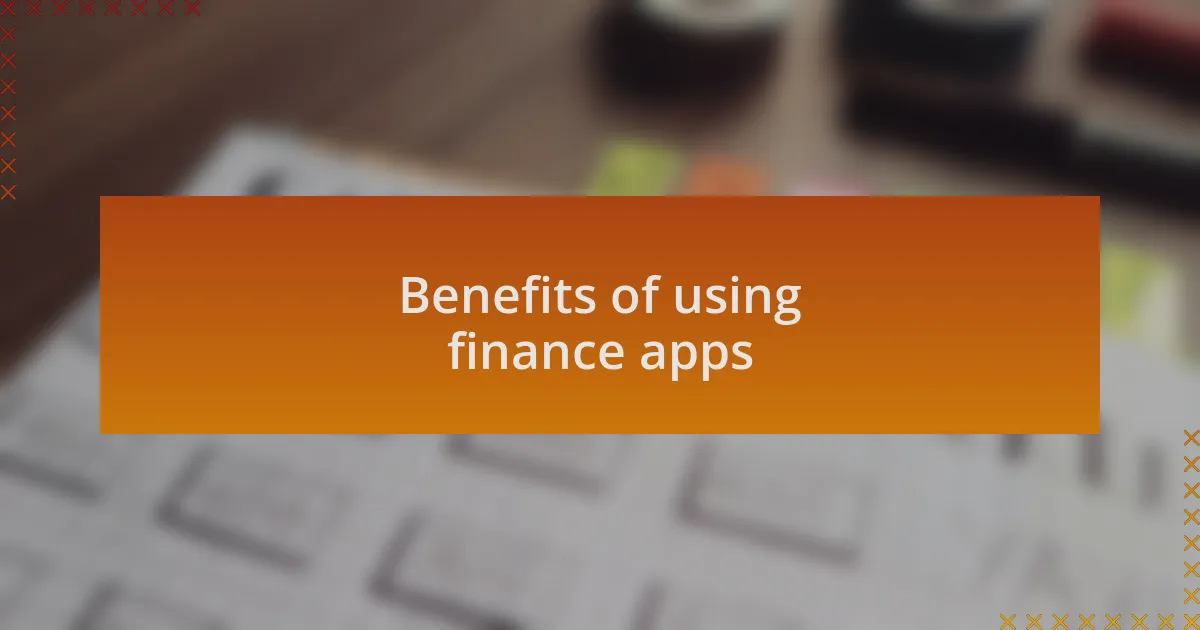
Benefits of using finance apps
Using finance apps can provide tremendous benefits for managing your money. I’ve noticed that having a budgeting app on my phone keeps my spending in check. It’s as if I have a financial coach in my pocket, gently nudging me to reconsider that impulsive purchase.
One standout feature of these apps is their ability to categorize expenses automatically. I remember the first time I reviewed my spending habits; I was shocked to find how much I spent on takeout. By tracking these habits visually, I was able to make impactful changes that freed up cash for experiences I truly valued.
Furthermore, finance apps often provide real-time insights and alerts. For instance, when I get close to my budget limit in a category, I receive a notification. This proactive approach has saved me from numerous impulse buys. I sometimes wonder how different my financial landscape would look without that timely reminder; would I still be falling prey to those little temptations? It’s fascinating how technology can shift our mindset and empower us to make wiser financial choices.

Key features of finance apps
One key feature of finance apps that I find incredibly useful is the goal-setting function. I remember setting a savings goal for a much-needed vacation; seeing my progress visually really motivated me. It’s amazing how tracking your goals can turn skepticism into excitement—how can you resist when you’re just a few dollars away from that dream trip?
Another vital aspect is the budgeting tools, which allow for customized categories. I once spent a whole month fiddling with these categories to reflect my true lifestyle, making sure to include things like “coffee runs” and “weekend outings.” This personal touch not only made budgeting feel relatable but also pushed me to prioritize what mattered most to me. Have you ever thought about how fine-tuning your budget can reveal hidden patterns in your spending?
Also, many finance apps now integrate with your bank accounts for seamless transaction tracking. The first time I synced my account, I was both excited and a bit nervous. But that real-time connection has clarified my financial picture more than I thought possible. How often do you check your account balances? Seeing it all in one place allows me to make informed decisions and avoid the pitfalls of impulse buying.
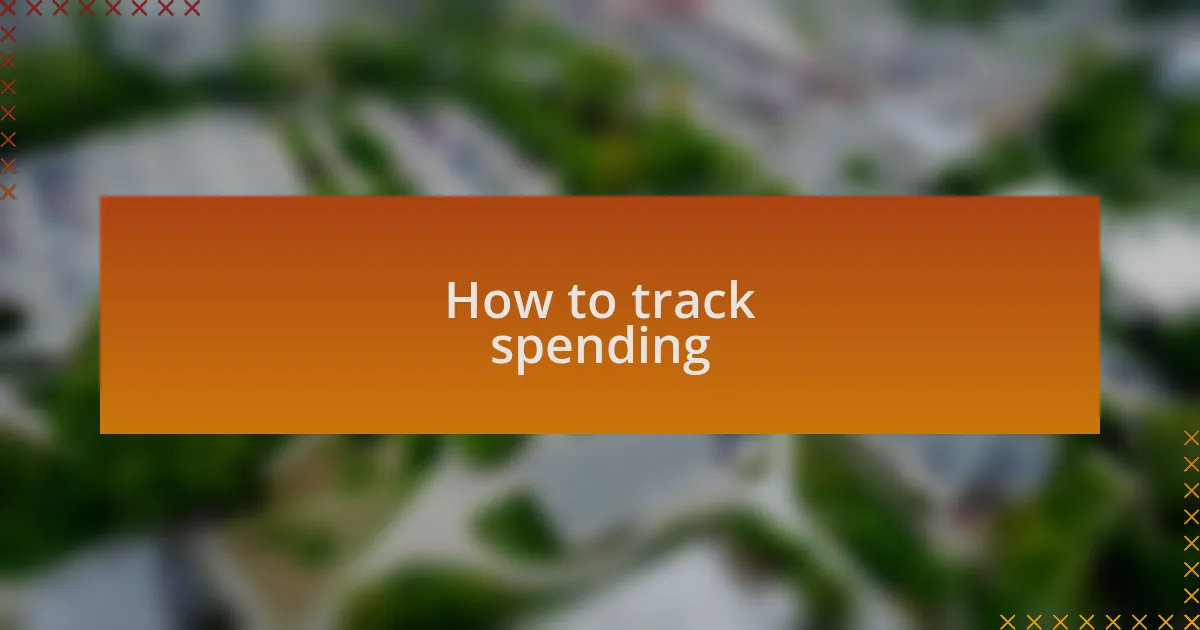
How to track spending
Tracking spending is an essential step in avoiding impulse buys, and I’ve found that keeping a daily log really helps. Each time I record an expense, I feel more aware of my choices. Have you ever noticed how simply writing things down makes you rethink that spontaneous purchase?
Another effective method is setting up alerts within your finance app. I remember when I enabled notifications for transactions exceeding a certain amount. Suddenly, those little indulgences felt more significant, and I started second-guessing whether I really needed that extra pair of shoes. Isn’t it fascinating how a simple alert can shift your spending mindset?
I also recommend reviewing your spending weekly. I often dedicate Sunday afternoons to this ritual, reviewing where my money went and how I can improve. It allows me to reflect on my habits and adjust my budgeting accordingly. Have you ever taken the time to evaluate your spending patterns? You’ll be surprised at what can be learned from just a few reflective moments.
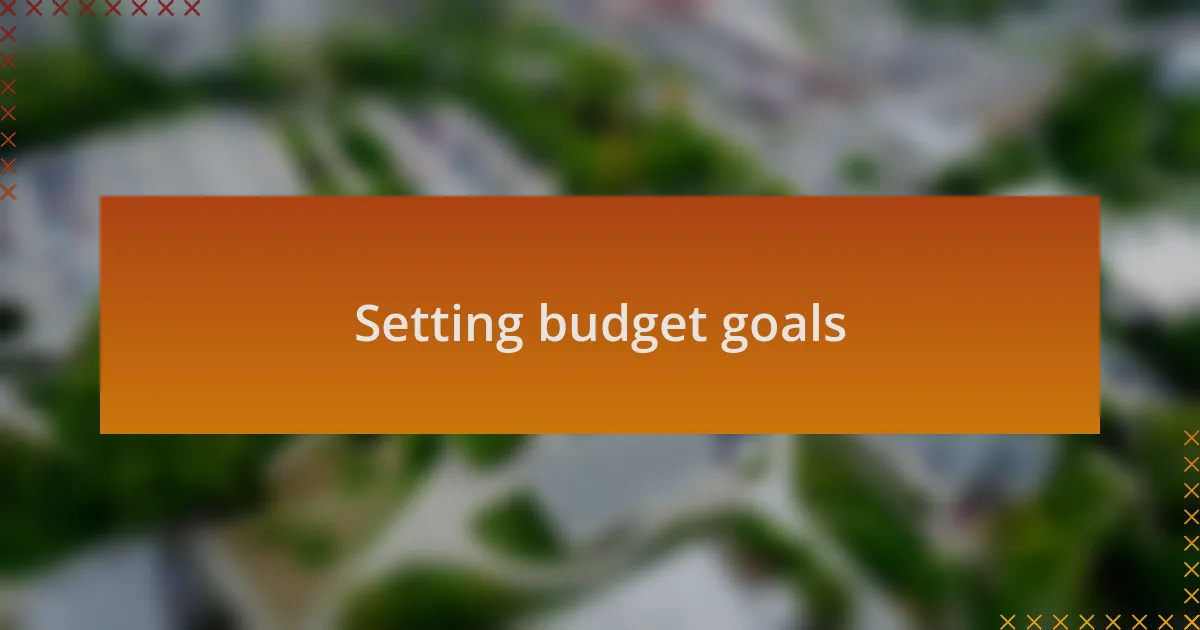
Setting budget goals
Setting budget goals is like creating a roadmap for your finances. When I first started, I set specific targets for saving each month. That little goal brought clarity to my spending decisions. I often ask myself, “How does this purchase align with my goals?” This mindset transformed how I viewed money.
One effective strategy I found was the 50/30/20 rule. It feels remarkably freeing! Allocate 50% of your income to needs, 30% to wants, and 20% to savings or debt repayment. In practice, it helped me visualize my finances in a balanced way. I remember when I realized I could still enjoy a meal out with friends without derailing my entire budget. Have you ever considered how a simple framework could change your financial outlook?
Additionally, I like to revisit and adjust my goals regularly. Life is dynamic, and so should be our budgets. Last year, due to an unexpected job change, I found myself needing to adapt my savings goals. Instead of feeling overwhelmed, I adjusted my budget to reflect my new circumstances, which alleviated a lot of stress. Have you ever felt stuck with your goals? Flexibility can make all the difference in maintaining a positive relationship with money.